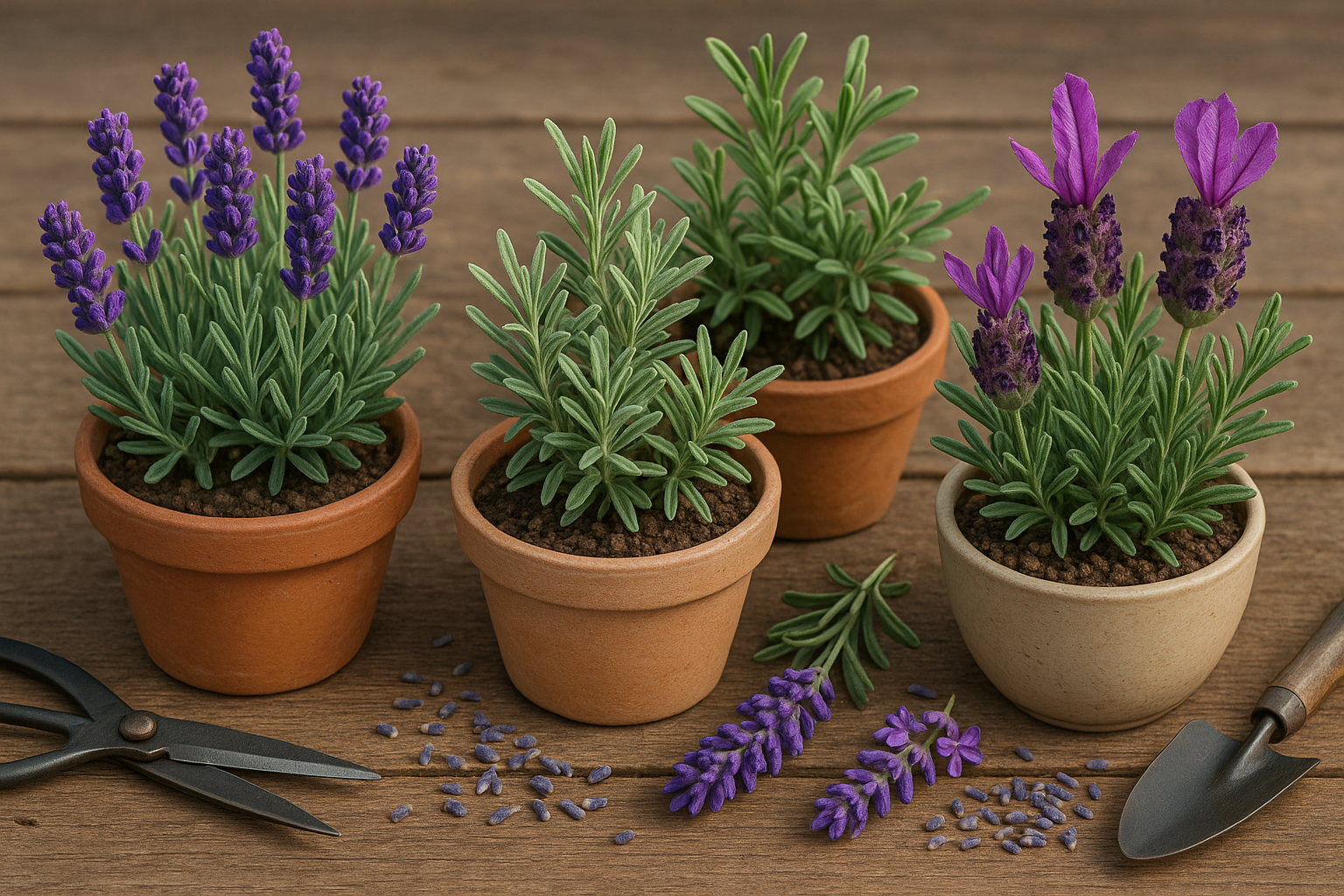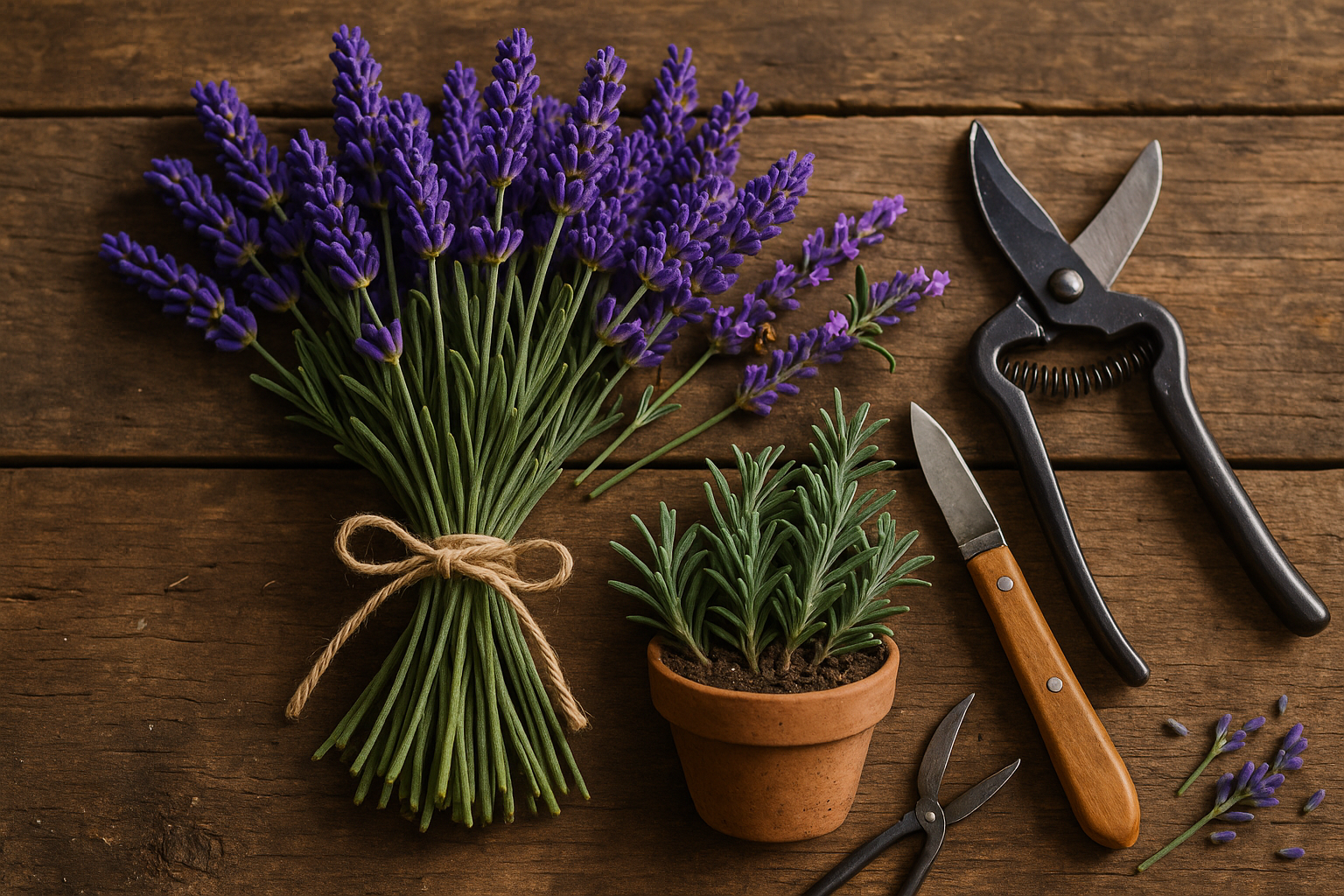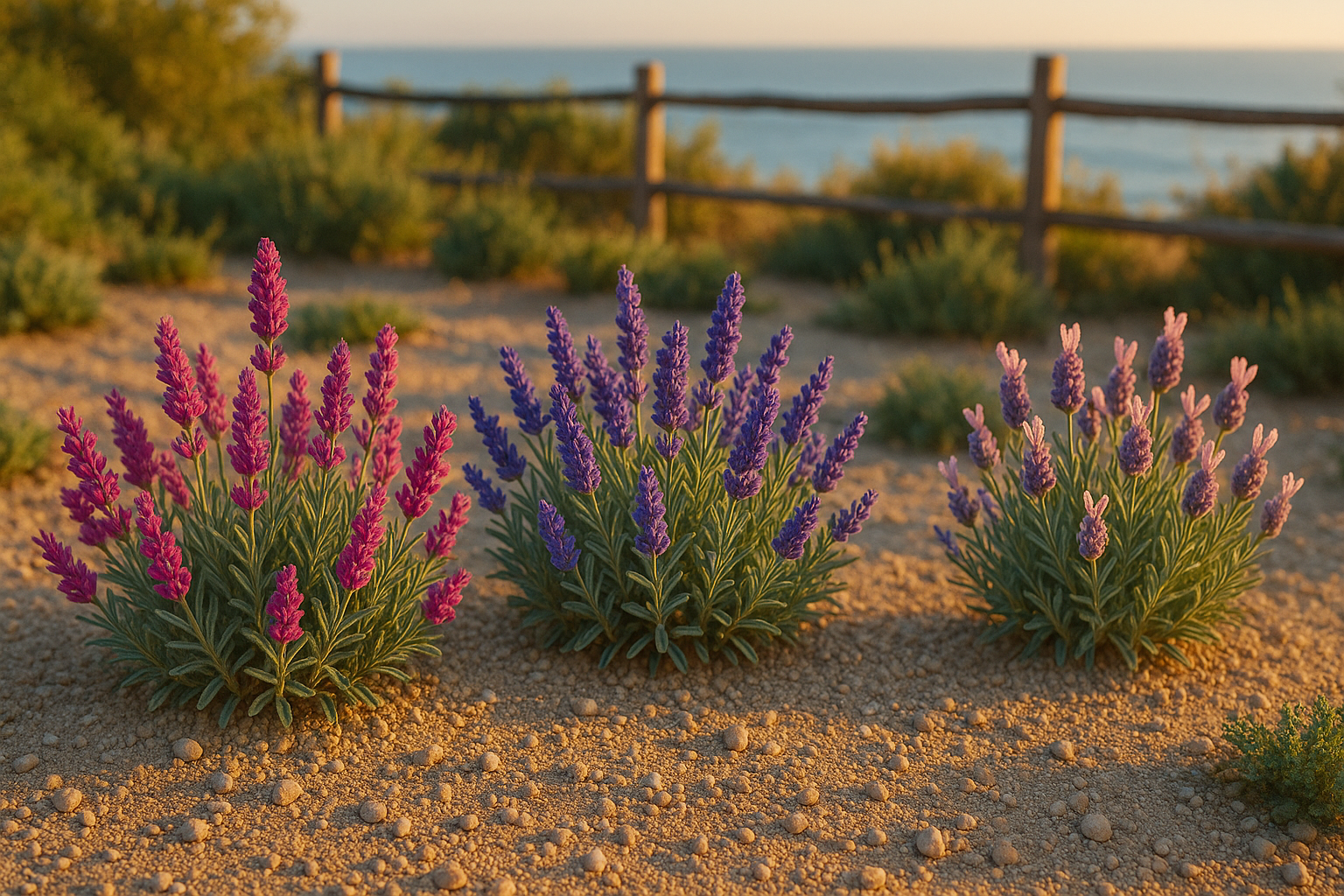Can You Grow Lavender Year-Round?
Growing lavender year-round is possible with the right approach. Success depends on choosing suitable varieties, providing proper care, and understanding seasonal challenges. With smart planning, lavender can thrive indoors or outdoors, offering beauty and fragrance throughout the year.
Understanding Lavender Varieties

When exploring the world of lavender, understanding the main types—English, French, Spanish, and hybrids—can make all the difference in creating a thriving garden or indoor display.
English lavender (Lavandula angustifolia), including favorites like the deep purple ‘Hidcote’, is cherished for its sweet fragrance, compact shape, and frost-hardy nature. This makes it well-suited to cooler climates and even winter survival if grown in well-drained soil with occasional pruning.
French lavender (Lavandula dentata) stands out with its fringed leaves and pronounced, toothed edges. It favors milder winters and warmer temperatures, growing vigorously but lacking the same cold tolerance as its English cousin. It’s perfect for Mediterranean gardens or as a summer patio plant that can be brought indoors before frost.
Spanish lavender (Lavandula stoechas), often recognized by its showy, rabbit-ear bracts atop flower heads, prefers hot, dry climates and offers unique color—try ‘Kew Red’ for a striking magenta pop. However, this type is sensitive to harsh frost and requires winter protection, either through mulching or moving to a sheltered spot.
Hybrid lavenders, such as lavandin varieties like ‘Provence’, are crosses between English and Portuguese species. They produce robust, fragrant plants with elongated spikes and impressive tolerance for heat and drought. Hybrids are perfect for hedges or large-scale planting in regions with warm summers and mild winters.
For year-round enjoyment, compact types like ‘Hidcote’ and smaller French lavenders can thrive in pots, making them excellent candidates for sunny windowsills or patios where they can be sheltered indoors as temperatures drop.
When planning your lavender display, choose the type best suited to your local climate and consider movable containers for varieties that need extra protection—ensuring fragrant blooms and silvery foliage all year round.
Ideal Growing Conditions for Lavender
Lavender thrives when its basic needs are met: plenty of sunlight, well-draining soil, and careful watering routines. Aim to plant lavender in a spot that receives at least six to eight hours of direct sunlight each day—even more in cooler climates.
Soil is just as important; lavender hates wet feet and does best in sandy or gritty soils with excellent drainage. If your soil is heavy or clay-like, mix in gravel or sand to loosen it. This helps prevent root rot, especially during wetter months.
When watering, think “less is more.” Allow the soil to dry out between deep waterings—lavender’s Mediterranean roots mean it prefers drought over dampness. Throughout the warmer growing months, your plant will soak up the sun and quickly push out fragrant blooms, but as autumn approaches, reduce watering since the plants won’t need as much moisture.
Come winter, most hardy lavender varieties, like ‘Munstead’ or ‘Hidcote,’ can handle frost as long as they’re not sitting in cold, soggy soil; mulching with gravel can help insulate roots and encourage winter dormancy.
Be wary of a few common mistakes:
- Overwatering
- Using rich fertilizers (lavender prefers lean soils)
- Planting in low-sun spots
These issues can disrupt healthy growth and cause problems such as leggy plants, root rot, or winter die-off. By tailoring your care to these simple but key needs, you’ll keep your lavender robust and thriving throughout the year.
Seasonal Care
Caring for your garden year-round means tuning into the unique needs each season brings. In spring, focus on preparing beds by clearing debris, adding fresh compost, and sowing seeds for both cool- and warm-season crops. Early pruning of shrubs and trees helps shape growth and encourages abundant flowering.
As temperatures rise in summer, prioritize consistent watering—especially during dry spells—while mulching to retain soil moisture and suppress weeds. Watch for pests, and support heavy bloomers or fruiting plants with stakes if needed.
Come autumn, it’s time for a tidy-up: remove spent annuals, trim back perennials, and plant bulbs for spring color. Mulch again to insulate plant roots, and rake leaves to your compost pile.
Winter requires a blend of protection and planning. For outdoor beds, use frost cloths or burlap wraps to shield sensitive plants, and ensure containers are protected from freeze-thaw cycles by moving them closer to buildings or indoors. Inside, cut back on watering and consider supplemental grow lights for houseplants that struggle with low sun. Inspect for pests that thrive indoors and rotate plants for even growth.
Throughout every season, regular observation is key—looking for signs of stress, disease, or shifting light conditions that may impact your plants. By tailoring your tasks, like adjusting fertilizer routines during active growth periods and providing wintertime rest, you’ll keep your garden thriving even as the calendar changes.
The most resilient gardens, both outdoors and inside, are the result of small but timely actions: from spring soil prep to autumn cleanup and winter vigilance, staying in sync with the seasons ensures ongoing health and beauty.
Growing Lavender Indoors for Year-Round Enjoyment
Growing lavender indoors can bring fresh fragrance and beauty to your home all year long, but it does require a bit of know-how for the best results. Start by choosing a compact variety like ‘Munstead’ or ‘Goodwin Creek Grey,’ which adapt well to indoor life thanks to their smaller size and tolerance for lower light.
Use a pot with drainage holes that’s at least 8–12 inches wide; lavender hates soggy roots, so well-draining soil (a cactus mix works great) is essential. Place your pot in the sunniest window you have—ideally, your lavender will receive 6–8 hours of direct sunlight daily. If you don’t have a bright spot, supplement with a simple LED grow light placed a few inches above the plant, running it for about 12–16 hours each day.
Indoors, low humidity and stagnant air can cause problems like leaf drop or pests. Boost humidity slightly by placing a tray of water nearby or misting the air (not the plant) occasionally. Use a small fan a few feet away to ensure airflow, which helps mimic lavender’s native breezy Mediterranean climate.
Compared to outdoor growing, indoor lavender needs less frequent watering; let the top inch of soil dry out before watering again. Avoid overfeeding, as too much fertilizer leads to lanky growth.
With some attention to light, proper potting, and a little airflow, even indoor gardeners can enjoy healthy, happy lavender and that signature calming scent all year round.
Common Issues and How to Prevent Them
Many plant enthusiasts often face challenges like root rot, leggy growth, fungal infections, and poor blooming. Luckily, most of these problems can be avoided with a few simple habits.
Root Rot
Root rot usually results from overwatering and poorly draining soil. Always use pots with drainage holes and allow the soil to dry out slightly between waterings—this is especially important for houseplants like succulents. For outdoor plants, amend heavy soils with perlite or sand to improve drainage.
Leggy Growth
Leggy growth happens when plants don’t get enough light. If your indoor plants are stretching and leaning, move them closer to a sunny window or consider using grow lights during darker months. Regular pruning also encourages fuller, bushier growth—snip off elongated stems just above a pair of healthy leaves.
Fungal Infections
Fungal infections thrive in damp, crowded conditions. Increase air circulation by spacing plants properly and avoid watering the foliage. Removing dead leaves and spent flowers promptly helps limit fungal spread.
Poor Blooming
Poor blooming is often caused by too little sunlight or the wrong kind of fertilizer. Most flowering plants need a high-phosphorus feed and several hours of bright light daily to bloom well.
Simple Care Routine
Maintaining a consistent care routine—monitoring light, using the proper soil, pruning as needed, and ensuring good airflow—goes a long way toward preventing these issues. This will help your plants stay vibrant and healthy through every season.
Harvesting, Pruning & Keeping Lavender Productive

Pruning your lavender isn’t just about keeping it neat—regular trimming is key for plant health, keeping your bushes full, and encouraging more flowers. In early spring or just after the first flush of blooms, use sharp, clean shears to snip about one-third of the green growth, shaping the plant into a gentle mound. Be careful not to cut into the woody base, as this can stunt regrowth.
Removing spent blooms with a gentle “haircut” often spurs a second round of flowering later in the season. For harvesting, the ideal time is when the buds are mostly colored but not fully open—this stage maximizes fragrance and oil content.
Snip flower stems in the cool morning after the dew dries, then bundle them for drying, crafting sachets, or using in culinary recipes like herbal teas and simple syrups.
To encourage bushier growth, pinch back new shoots during the plant’s first year and avoid over-fertilizing, as too much nitrogen can cause lanky growth. Ensuring your lavender gets at least six hours of sun, good air circulation, and well-draining soil will also help keep it healthy, productive, and beautiful for years to come.
Conclusion
Year-round lavender growth is possible, but it depends on a mix of careful planning, choosing the right plant variety, and dedication to adjusting care routines as the seasons change. Selecting cold-hardy lavender types like ‘Munstead’ or ‘Hidcote’ offers more resilience outdoors, especially in mild climates, while tender varieties such as ‘French’ lavender fare better indoors during winter.
No matter the variety, lavender requires plenty of sunlight and well-drained soil—these basics can’t be skipped. While outdoor plants naturally grow and bloom from late spring to summer, bringing potted lavender indoors, ideally near a south-facing window, allows you to enjoy their fragrance and foliage even during colder months.
Supplemental grow lights and careful watering (to avoid root rot) help keep indoor lavender healthy. Still, don’t expect continuous blooming all year—lavender has natural cycles influenced by daylight and temperature. Instead, approach year-round lavender growing as an ongoing experiment.
Mix and match indoor and outdoor strategies, note what works in your space, and most importantly, take pleasure in each stage—from pruning woody stems in winter to harvesting fragrant blooms in summer. Whether you reap flowers year-round or simply savor hardy green leaves in winter, cultivating lavender should add joy and beauty to every season.
